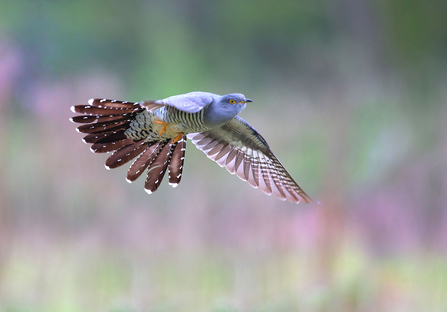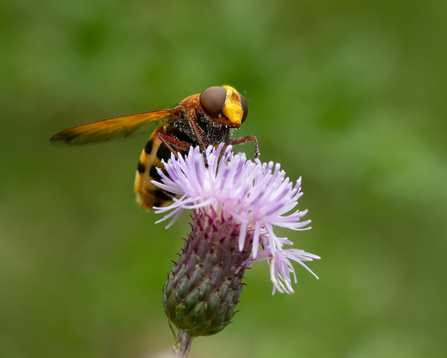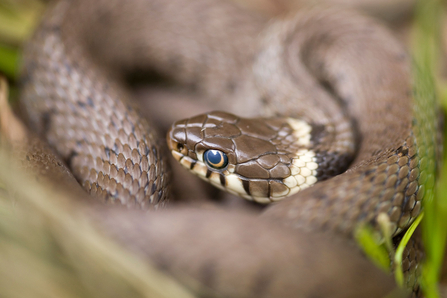Trickery helps many species to survive and is far more common in nature than you may realise. Any organism that can put one over on its competitor, predator or prey, has the edge when it comes to surviving in the wild.
Nature's April Fools
© Jon Hawkins

©Jon Hawkins
Cuckoo
The ultimate trickster, this ‘brood parasite’ lays its egg in other bird's nests, deceiving them into raising their young. When the large Cuckoo chick hatches, it has the strength to push the host bird's eggs out of the nest, also ensuring it gets all the food.
Dunnocks, Meadow Pipits and Reed Warblers are common victims of this 'cuckolding' behaviour. Amazingly, the Cuckoo is even able to match the colouring and pattern of the host specie's egg to ensure they are well and truly fooled!

Jon Hawkins – Surrey Hills Photography
Hornet Mimic Hoverfly
At almost 2cm long, the hornet mimic hoverfly is the largest hoverfly species in the UK. As its name suggests, it is an excellent mimic of the Hornet, but is harmless to humans.
Know as Batesian Mimicry, many species of hoverfly emulate bees and wasps with their markings in order to gain some protection from predation.

Fly orchid © Philip Precey
Fly Orchid
A rare flower of chalk grassland sites, the Fly Orchid is an unusual trickster. Despite the flowers looking like flies, they actually attract digger wasps. The orchid releases a scent which mimics a female wasp's pheremones, luring in males that attempt to mate with the blooms. The male wasps get a dusting of pollen, which they carry on to the next flower that fools them, hopefully pollinating the plant - crafty!

© Charlie Hoare
Grass Snake
Our largest snake, these beautiful reptiles are harmless to humans and will often 'play dead' if threatened by a predator. Lying on their side or upside down, mouth agape, they even release a foul smelling liquid from their anal gland, oozing the stench of decay.

buff tip - Vaughn Matthews (please also tag @vaughnmatthews8 if using on Instagram or @VaughnMatthews2 on Twitter)
Buff-tip Moth
Blink and you may miss the Buff-tip Moth, which blends in perfectly with its surroundings, looking just like the twig of a birch tree. A night-flying moth, this amazing creature can be seen between May and July.
It is mainly silvery-grey in colour, with a square-cut, buffy head, and a buff patch at the end of the wings which gives it the common name.

